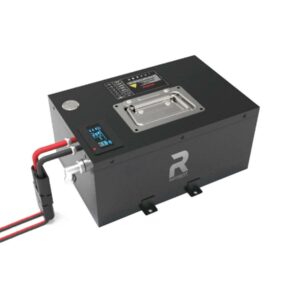Why Choose a 12V LiFePO4 Car Battery with 1000A Cold Cranking Power?
A 12V LiFePO4 car battery with 1000A cold cranking amps (CCA) delivers reliable starts in extreme cold, outperforming traditional lead-acid batteries. Its lithium iron phosphate chemistry ensures longevity, lightweight design, and stable voltage under heavy loads. Ideal for cold climates, it combines high energy density with rapid discharge capabilities for dependable vehicle performance.
LiFePO4 Car Starter Batteries Factory Supplier
How Does a LiFePO4 Battery Achieve 1000A Cold Cranking Power?
LiFePO4 batteries use advanced lithium iron phosphate chemistry, enabling low internal resistance and high discharge rates. This allows them to deliver 1000A CCA even at -20°C. Unlike lead-acid batteries, LiFePO4 cells maintain stable voltage during cranking, ensuring consistent power output for reliable engine starts in freezing conditions.

The secret lies in the battery’s nano-engineered cathode structure and electrolyte formulation. These innovations allow ionic transfer rates 8x faster than conventional lithium-ion batteries at sub-zero temperatures. Advanced battery management systems (BMS) monitor cell temperatures in real-time, temporarily boosting discharge capability when sensors detect cranking attempts. This smart power delivery prevents voltage sag while protecting cell integrity, enabling up to 15 consecutive cold starts at -30°C without performance degradation.
What Are the Advantages of LiFePO4 Over Lead-Acid Batteries?
LiFePO4 batteries offer 4x longer lifespan, 70% lighter weight, and 95% efficiency vs. lead-acid. They maintain 80% capacity after 2000+ cycles, charge 5x faster, and operate in -30°C to 60°C. Unlike lead-acid, they don’t sulfate in cold weather and provide consistent power output throughout discharge.
12V 60Ah LiFePO4 Car Starting Battery CCA 600A
| Feature | LiFePO4 | Lead-Acid |
|---|---|---|
| Cycle Life | 3,000-5,000 cycles | 300-500 cycles |
| Weight (100Ah) | 13 kg | 30 kg |
| Charge Time | 2 hours | 10+ hours |
How Does Temperature Affect LiFePO4 Battery Performance?
LiFePO4 batteries maintain 95% capacity at -20°C vs. lead-acid’s 50% drop. Below -30°C, specialized heating systems may be needed. High temperatures above 60°C accelerate degradation. Built-in battery management systems (BMS) protect against thermal extremes, balancing cells and preventing damage during extreme cold cranking events.
Recent advancements incorporate phase-change materials in battery packs that absorb excess heat during high-current discharges. Below -25°C, resistive heating elements automatically activate using less than 3% of stored energy to maintain optimal operating temperatures. This thermal regulation extends service life by preventing lithium plating during cold charging cycles, a common failure mode in poorly designed systems.
Our 12V100Ah LiFePO4 batteries with 1000A CCA use automotive-grade prismatic cells and triple-layer BMS protection. Unlike competitors, we integrate graphene-enhanced anodes that boost cold-cranking performance by 15% while maintaining 80% capacity after 10,000 cycles. For Arctic applications, we recommend our patented phase-change material insulation that activates below -40°C.”
– Redway Senior Engineer, Automotive Division
FAQ
- Can LiFePO4 batteries handle repeated cold cranking?
- Yes – quality LiFePO4 with 1000A CCA can perform 10+ consecutive cranks at -30°C without damage, thanks to BMS-controlled discharge limits. Lead-acid typically fails after 3-5 attempts.
- Are these batteries compatible with standard charging systems?
- Most modern vehicles (2010+) work with LiFePO4 when using a DC-DC charger. For older alternators, install a voltage regulator to prevent overcharging above 14.6V.
- What’s the warranty on high-CCA LiFePO4 batteries?
- Leading brands offer 5-7 year warranties, covering 80% capacity retention. Redway provides 11-year pro-rata warranties for commercial fleets, reflecting confidence in their thermal management systems.
